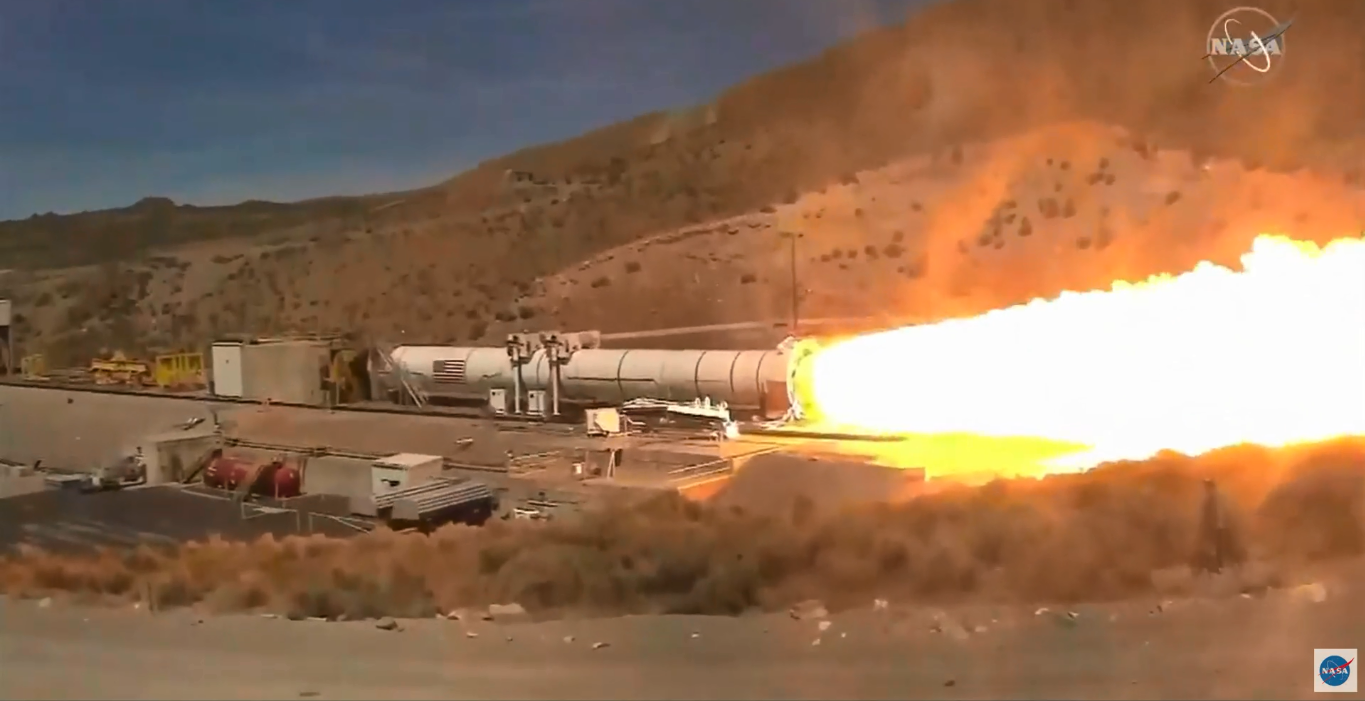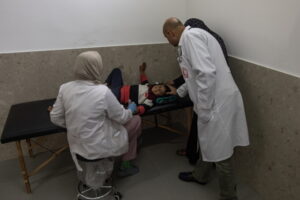NASA‘s new moon rocket finished a full-scale flight support booster (FSB) test Wednesday (Sept. 2) as the agency gets its Space Launch System (SLS) ready to fly astronauts one day.
The two-minute test was broadcast live from Promontory, Utah at 3:05 p.m. EDT (1:05 p.m. local time or 1905 GMT) on NASA Television, and the results will be analyzed to see how well it went, officials said during the broadcast.
Footage from NASA showed the horizontal booster firing up on its test stand and shooting out orange flames against the gray, hilly landscape. The booster was supposed to fire 3.6 million pounds of thrust upon ignition and remain active for 122 seconds, but the exact performance metrics will be released at a later time. Minutes after the test concluded, steam from the flames’ heat continued to rise from the landscape.
What a view! @NASA astronauts @JonnyKimUSA and @Astro_FarmerBob watched today’s SLS Flight Support Booster (FSB-1) test with @northropgrumman‘s Jeff Foote and Charlie Precourt. pic.twitter.com/4jG3tfBB0u
— NASA_SLS (@NASA_SLS) September 2, 2020
“The test will evaluate new materials and verify that all the ballistic requirements of the motor are met,” said Nikolas Ciaston, a ballistics engineer at SLS booster contractor Northrop Grumman, in a prerecorded video message broadcast on NASA TV just before the booster firing.
The enigma of Nan Madol: Home of pre-flood Stone Gods
Controversial US decision “temporarily & partially” lifts the arms embargo on Cyprus
Results from this test will also be used to ready the builds of booster rockets after the Artemis 3 mission, NASA said in a statement. Artemis 3 is supposed to be the first human landing on the moon and is scheduled to take place in 2024, but the agency is working on building out its future rockets and spacecraft now to be ready for future missions.
Read more: Space
Ask me anything
Explore related questions





